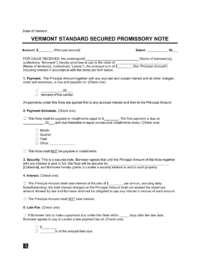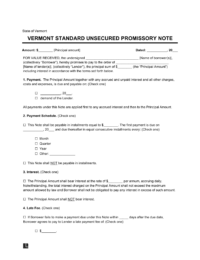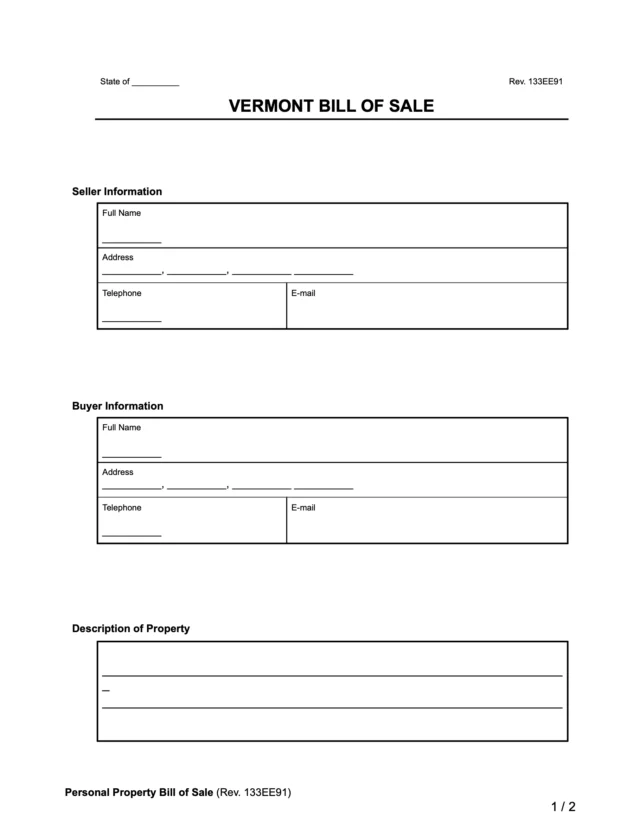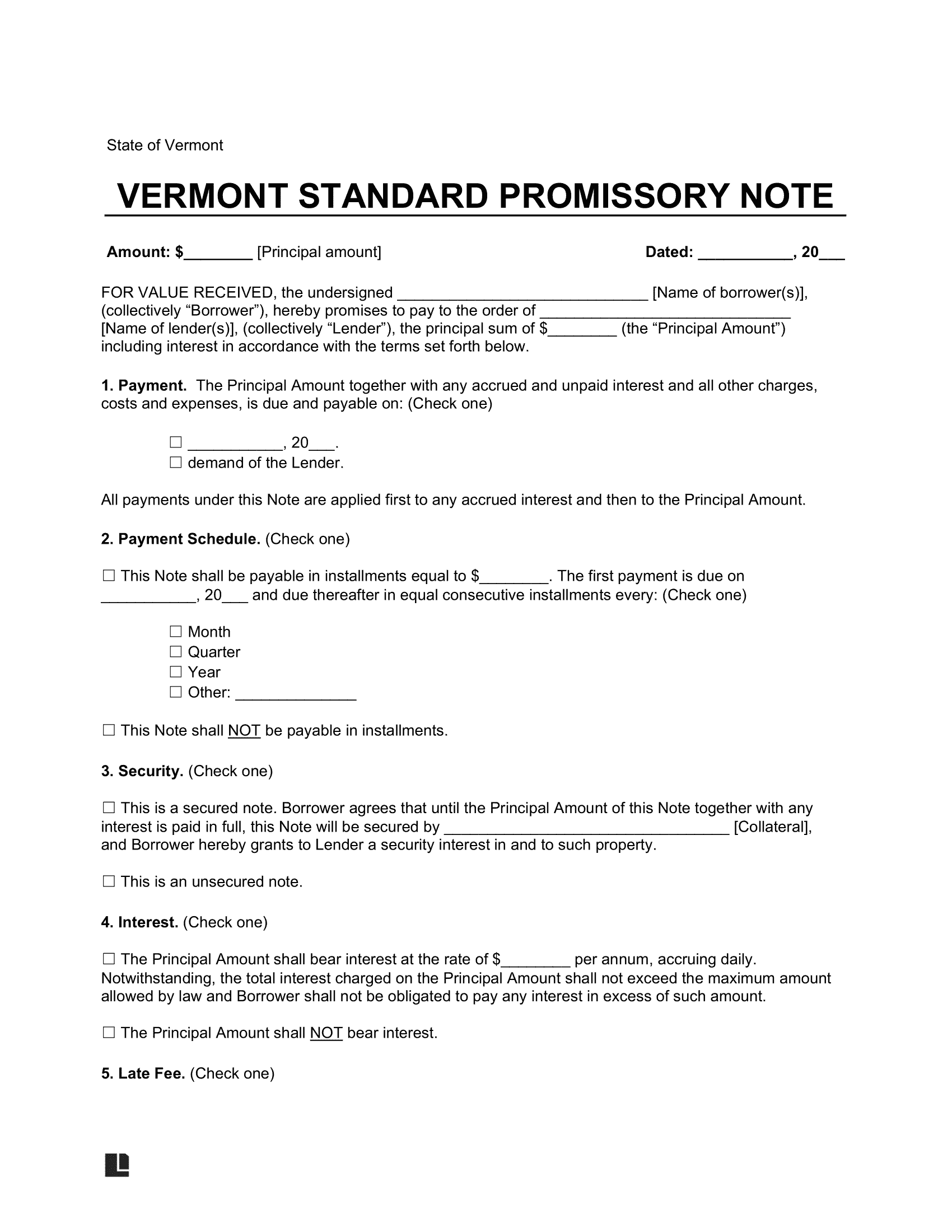What Is a Vermont Promissory Note?
A Vermont promissory note is a formal declaration of a financial obligation where one party acknowledges a sum to another. This document outlines the loan’s details, including the borrowed amount, repayment conditions, and interest rates. It may also include potential consequences for late payments or non-payment, including additional interest, late fees, or legal repercussions.
This note provides clarity, allowing both parties to reference it so they understand their rights and obligations. It reminds the borrower of their commitment and holds them accountable in case they default.
Laws: Promissory notes fall under Title 9A, Article 3 of the Vermont Statutes Annotated.
Statute of Limitations: Six years (9A V.S.A. §3-118; Clark v. Distefano, 195 A. 3d 379, 2018 VT 82 (2018)).
Types of Vermont Promissory Notes: Secured vs. Unsecured
The type of Vermont promissory note you choose can make all the difference when it comes to financial protection and loan clarity.
Secured Vermont Promissory Note
Creates a written agreement in which a borrower provides collateral to obtain a loan from a lender.
Unsecured Vermont Promissory Note
This option doesn't demand the borrower to provide collateral, as they can obtain a loan by having good credit or personal connections.
Usury Laws and Interest Rates in Vermont
Your promissory notes must follow the state’s usury laws, which you can find in the Vermont Statutes Annotated Title 9, Chapter 4 (Interest):
- Usury Rate (§ 41a(a)): 12%.
-
For Loans with Vehicle as Collateral (§ 41a(b)(4)):
- If the vehicle is the current model year or one year older: 18%.
- If the vehicle is older than the current or previous model year: 20%.
- For Credit Cards (§ 41a(b)(3)): Any rate to which the borrower and lender agree.
- For Loans Secured by Subordinate Lien (§ 41a(b)(7)): 18%.
- For Installment Loans (§ 41a(b)(5)): Interest is 24% per annum for the first $1,000 the lender loans to the borrower. It decreases to 12% per annum for any amount greater than $1,000 or an 18% annual percentage rate (APR) on the total amount (whichever is lesser).
Sample Vermont Promissory Note
View a free sample Vermont promissory note to learn what it looks like. Use our document editor to create your own and download it in PDF or Word.





